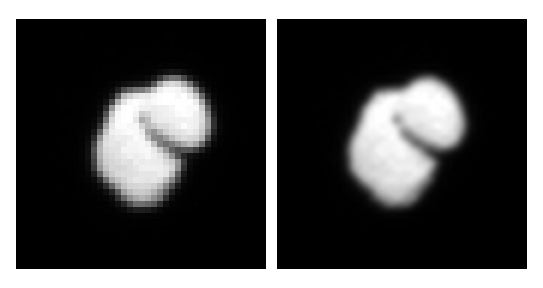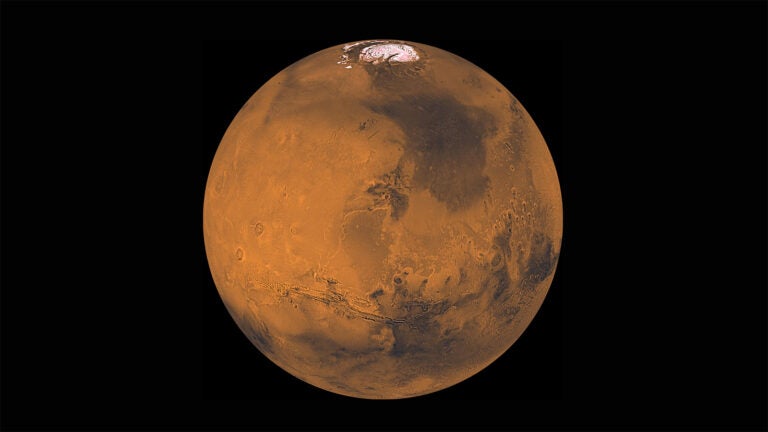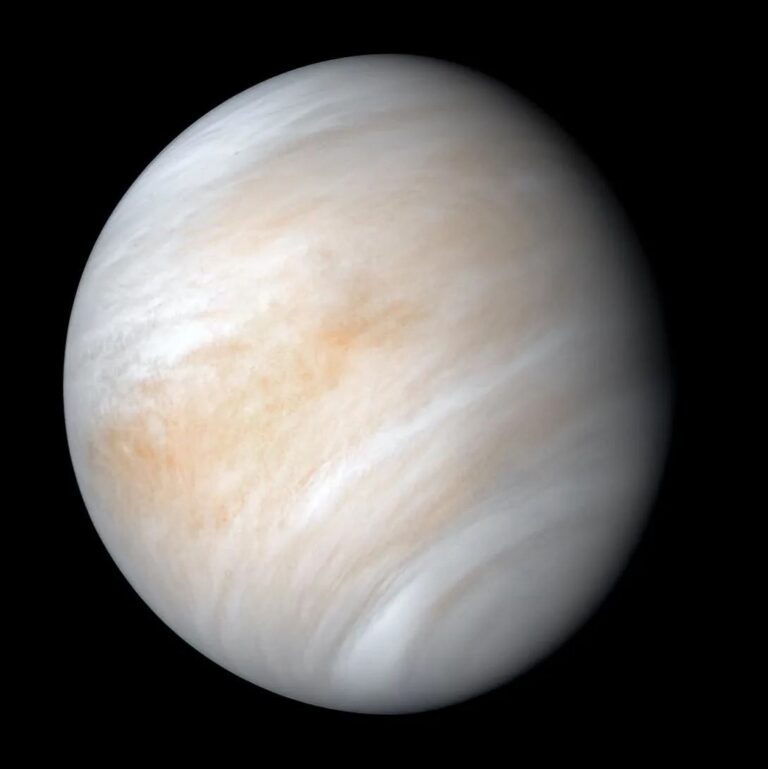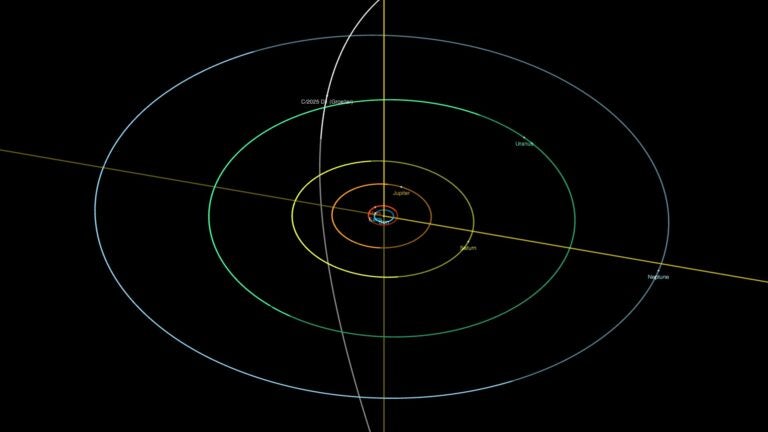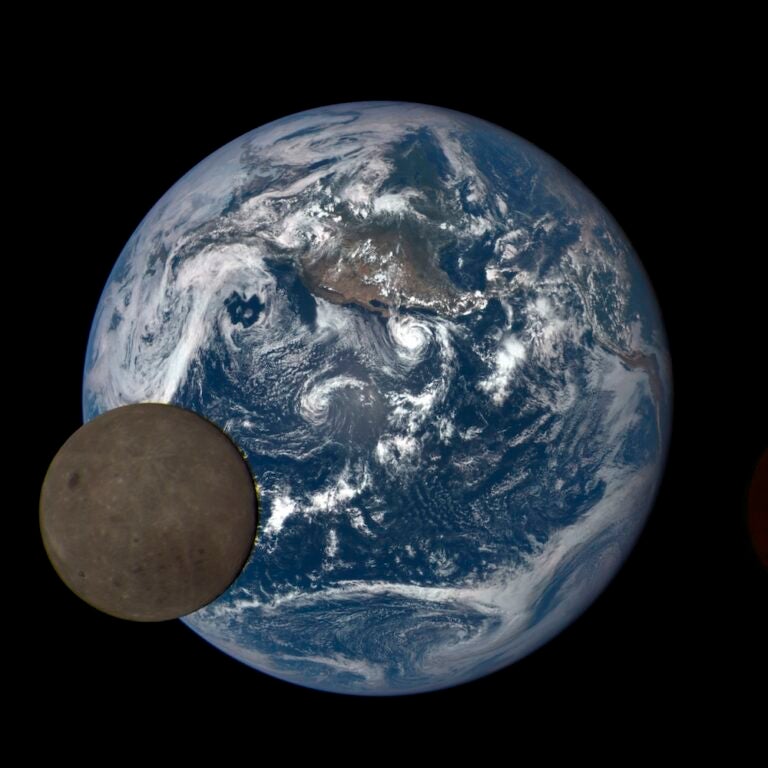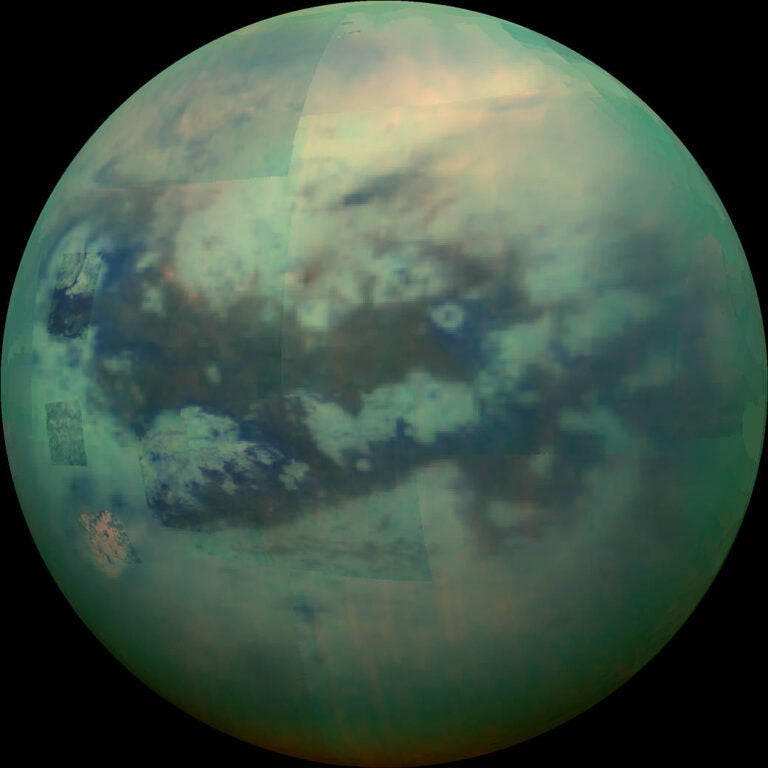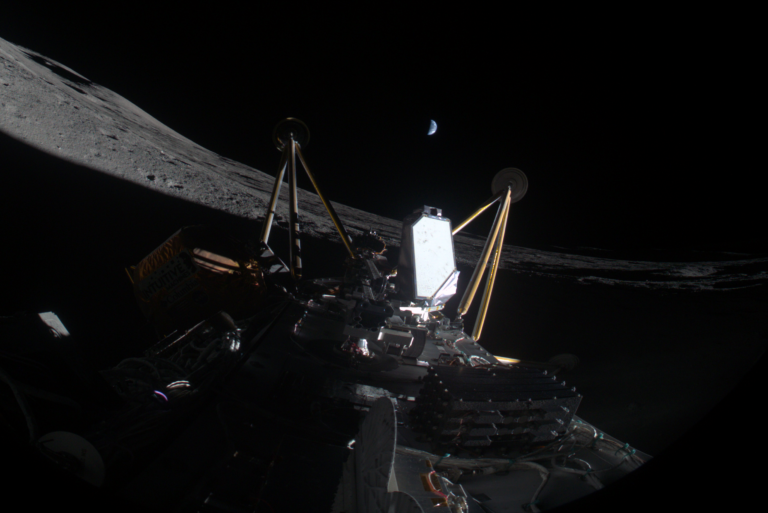“We like to refer to OSIRIS as the eyes of Rosetta,” said Holger Sierks from the Max Planck Institute for Solar System Research (MPS) in Germany. “However, these eyes are quite unlike our own.” The imaging system is equipped with several color filters allowing only light within a limited range of wavelengths to pass through. As a result, the intensity variations seen in OSIRIS images are based only on a small part of the sunlight reflected by the comet. “For scientific questions, these images are superior to those containing all wavelengths,” said Sierks. For example, the fingerprints that certain minerals or processes such as space weathering leave in the light reflected from the comet can be tracked down this way.
But what is 67P’s “true” color? To create an image as it would be seen by the human eye, the OSIRIS team superposed three images taken with the red, green, and blue filters, a principal also employed in computer and TV monitors. “In the case of OSIRIS, the three images have to be taken one after the other while Rosetta continues to speed through space and the comet’s nucleus rotates,” Sierks said. The three images are therefore not only shifted with respect to each other, but also taken from slightly different observing geometries. Only a careful superposition can therefore reconstruct such a color image of 67P.
“As it turns out, 67P looks dark gray, in reality almost as black as coal,” said Sierks. In order to make surface details visible, the intensity of these images is enhanced, thus creating lighter hues of gray.
At the same time, first analyses show that Rosetta’s comet reflects red light slightly more efficiently than other wavelengths. This is a phenomenon well-known from many other small bodies and due to the small size of the surface grains. It does not, however, mean that the comet looks reddish to the human eye. Since in natural sunlight red components are slightly suppressed, to the human eye both effects together create a grayish appearance.
Long before Rosetta’s arrival at the comet, ground-based observations had shown 67P to be gray on average. However, scientists are surprised that the OSIRIS images taken during the past months and weeks from close-by reveal an extremely homogeneously colored body even on a detailed scale, pointing at little or no compositional variation on the comet’s surface.
As an example, the images contain no signs of surface ice. Such icy patches would appear as bluish features, thus appearing brighter in the blue filter than in the other filters. As it seems, the comet’s ice is neatly hidden underneath the surface.
Apart from ice, OSIRIS’s 25 filters were chosen to detect certain minerals such as pyroxenes and mineral hydration on the comet’s surface as well as the distribution of different gas species in the coma. Analysis of the information from these filters is still going on.

